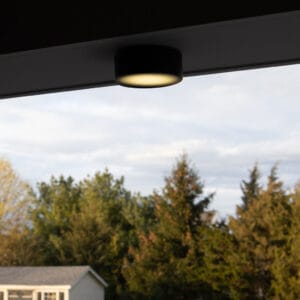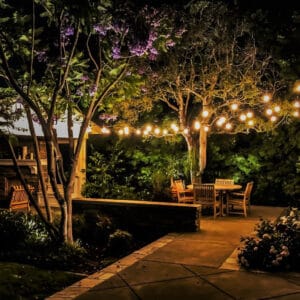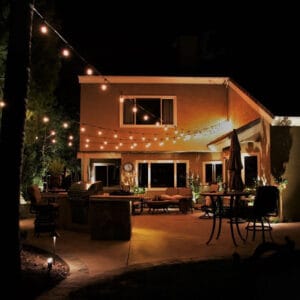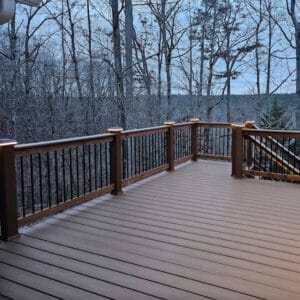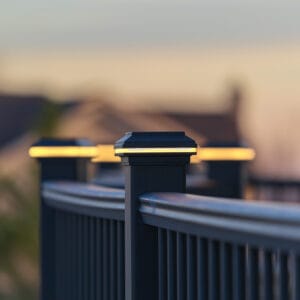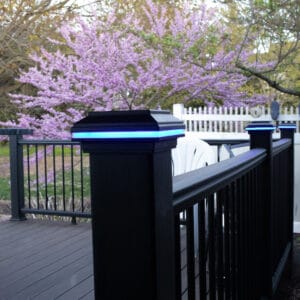Introduction
Imagine stepping into your backyard on a crisp evening, only for warm, inviting lights to illuminate your pathway instantly. No fumbling for switches, no worrying about wasted energy—just seamless illumination when you need it. That’s the magic of motion sensor lights in landscape lighting solutions.
Motion sensor lights are a game-changer for homeowners who want to enhance security, save energy, and add convenience to their outdoor spaces. Whether used for pathways, driveways, gardens, or patios, these intelligent lighting solutions offer both aesthetic and practical benefits.
This guide explores how motion sensor lights elevate landscape illumination, their key benefits, installation tips, and answers to frequently asked questions. Let’s dive in!
How Motion Sensor Lights Enhance Landscape Illumination
1. Security and Safety
A well-lit outdoor space is a powerful deterrent against intruders. When a sudden light switches on, it signals activity, making burglars think twice before approaching. Motion sensor lights create an extra layer of security without requiring constant illumination. Improve home security with strategic lighting placement.
From a safety standpoint, they help prevent trips and falls. Whether navigating a dimly lit pathway, climbing stairs, or moving through the backyard at night, automatic lighting significantly improves visibility and reduces accidents.
2. Energy Efficiency and Cost Savings
Unlike traditional outdoor lighting that stays on all night, motion sensor lights activate only when needed. This reduces unnecessary energy consumption, lowering electricity bills and promoting sustainable living.
| Lighting Type | Energy Consumption | Cost Efficiency |
| Traditional Lights | Always On | Higher Bills |
| Motion Sensor Lights | On-Demand | Lower Bills |
Modern LED landscape lighting ideas further enhance savings by consuming significantly less power while providing bright illumination. Find energy-saving outdoor lighting tips from the U.S. Department of Energy.
3. Convenience and Automation
Gone are the days of searching for light switches in the dark. Motion sensor lights offer hands-free automation, ensuring seamless lighting when movement is detected.
Many advanced systems integrate with smart home technology, allowing you to adjust brightness, sensitivity, and timing settings via smartphone apps. Some even sync with security cameras for added peace of mind. Enhance your outdoor lighting experience with the Tru-Scapes Color Control App.
4. Aesthetic Appeal and Ambiance
Motion sensor lights aren’t just functional—they also enhance your home’s curb appeal. Thoughtfully placed lights can highlight architectural features, pathways, and gardens, creating a stunning visual effect.
Popular placement ideas for aesthetic appeal:
- Pathways: Small, discreet motion lights to guide footsteps.
- Garden Beds: Accent lighting that activates when someone walks nearby.
- Water Features: Motion-activated lights add drama to fountains or ponds.
- Deck & Patio: Check out our guide to deck and patio lighting to create an inviting outdoor space.
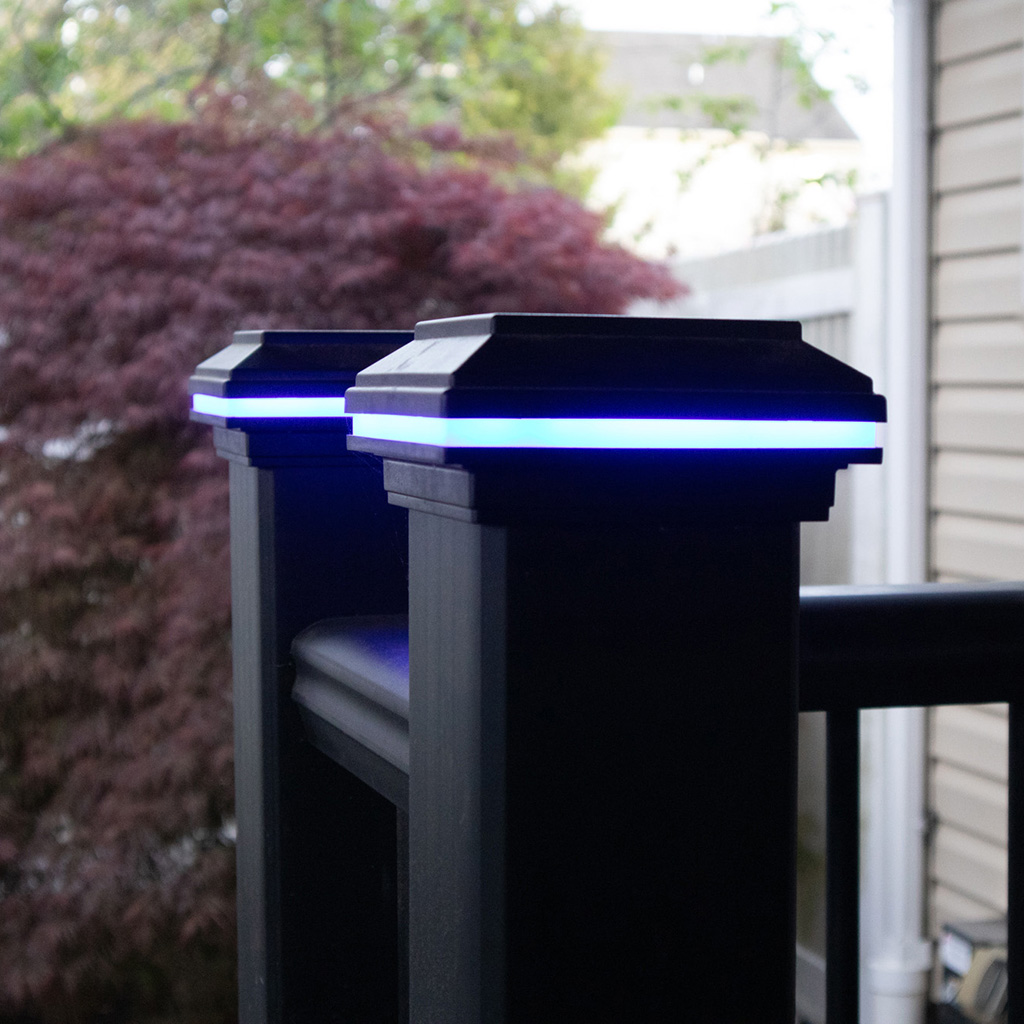
Choosing the Right Motion Sensor Lights for Your Landscape
1. Light Type & Brightness
Choosing the right light type and brightness is key to achieving the desired effect.
- LED Lights: Energy-efficient, long-lasting, and bright.
- Solar-Powered Lights: Eco-friendly, great for sustainability.
- Halogen or Incandescent Lights: Warmer glow but higher energy consumption.
Brightness is measured in lumens:
- 100-200 lumens: Subtle pathway lighting.
- 300-700 lumens: General outdoor use.
- 700+ lumens: Security-focused lighting.
2. Sensor Range & Sensitivity
Different spaces require different sensor ranges:
- Short-range (10-20 feet): Ideal for doorways and small patios.
- Medium-range (20-50 feet): Great for pathways and decks.
- Long-range (50+ feet): Best for driveways and larger yards.
3. Weather Resistance & Durability
- Look for an IP rating of at least IP65 to withstand rain, dust, and extreme temperatures.
- Materials like stainless steel, aluminum, and impact-resistant plastic ensure longevity.
Installation Tips for Motion Sensor Lights
Installing motion sensor lights is simple, but strategic placement is key for optimal performance.
1. Strategic Placement
- Entry Points: Position lights near doors, garages, and gates.
- Pathways & Walkways: Space lights evenly for continuous illumination.
- High-Traffic Areas: Install near frequently used outdoor spaces like patios and decks.
2. Adjust Sensitivity & Range
Customizing motion sensitivity prevents false activations. Avoid placing lights near moving tree branches, passing cars, or pets to reduce unnecessary triggers. Learn how to prevent false activations with proper maintenance strategies.
3. Maintain & Clean Regularly
- Wipe down sensors to remove dirt and debris.
- Replace bulbs if brightness diminishes.
- Check batteries in solar-powered models for longevity. Ensure your lighting withstands harsh conditions with these winter outdoor lighting tips.
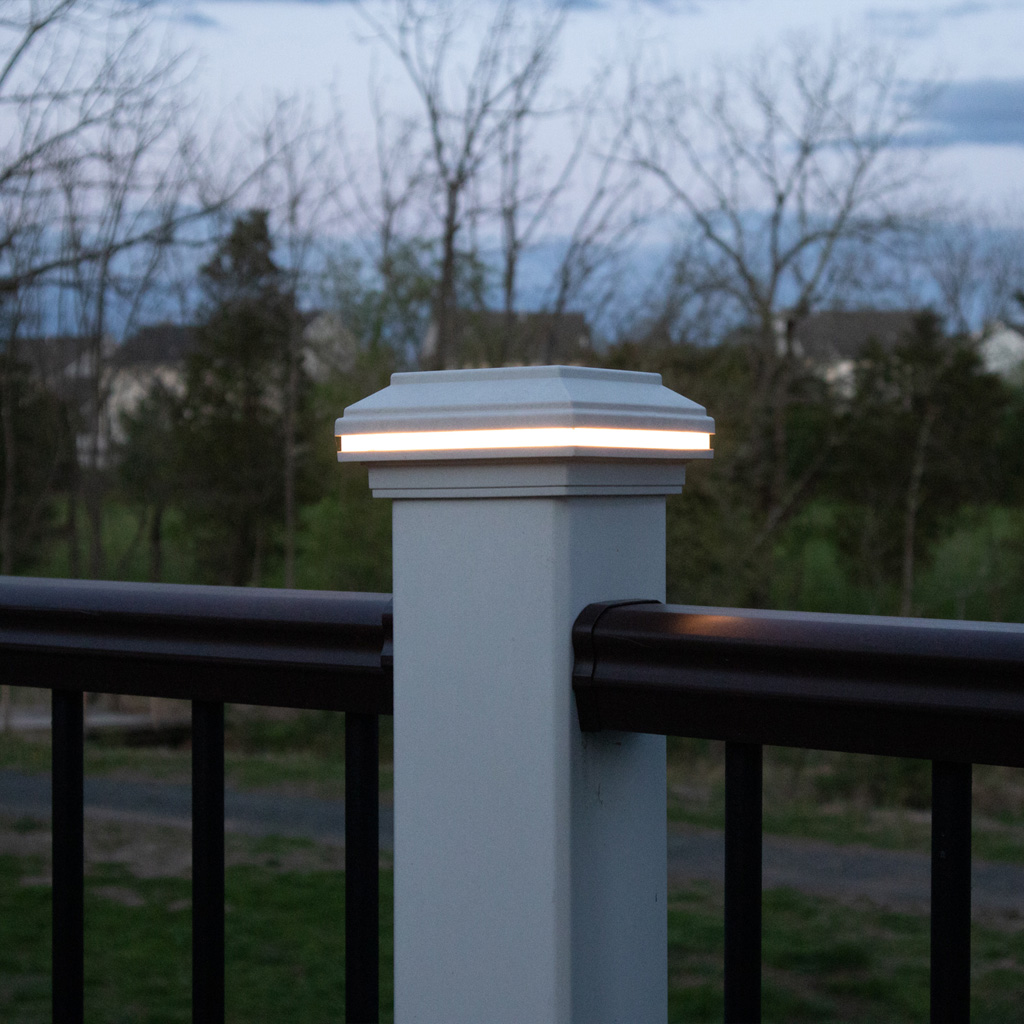
FAQs About Motion Sensor Lights in Landscape Illumination
1. Do motion sensor lights work in all weather conditions?
Yes! High-quality outdoor-rated lights are waterproof and weatherproof, ensuring functionality in rain, snow, or extreme heat. Learn how to reduce light pollution while maintaining effective outdoor lighting.
2. Can motion sensor lights be solar-powered?
Absolutely! Solar-powered motion lights are an eco-friendly alternative, charging during the day and activating at night.
3. How do I prevent false activations?
Adjust the motion sensitivity settings and avoid placing lights near trees, moving cars, or heat sources.
4. Do motion sensor lights require wiring?
It depends. Hardwired models connect to your home’s electrical system, while battery-operated or solar-powered lights offer a wireless alternative.
5. Are motion sensor lights compatible with smart home systems?
Many modern options integrate with Google Home, Amazon Alexa, and smart home apps, allowing remote control and automation.
Conclusion
Motion sensor lights play a crucial role in landscape illumination, offering a perfect blend of security, efficiency, and aesthetics. Whether you’re looking to deter intruders, enhance safety, or elevate your outdoor ambiance, these lights provide a smart and stylish solution.
With a wide range of designs, power sources, and sensor capabilities, there’s a motion sensor light for every homeowner’s needs. By selecting the right models and installing them strategically, you can transform your outdoor space into a well-lit, inviting sanctuary. Get expert insights on landscape lighting transformations to upgrade your outdoor lighting today!

